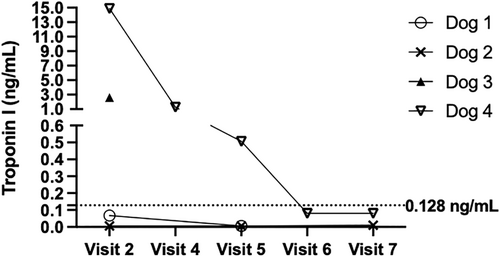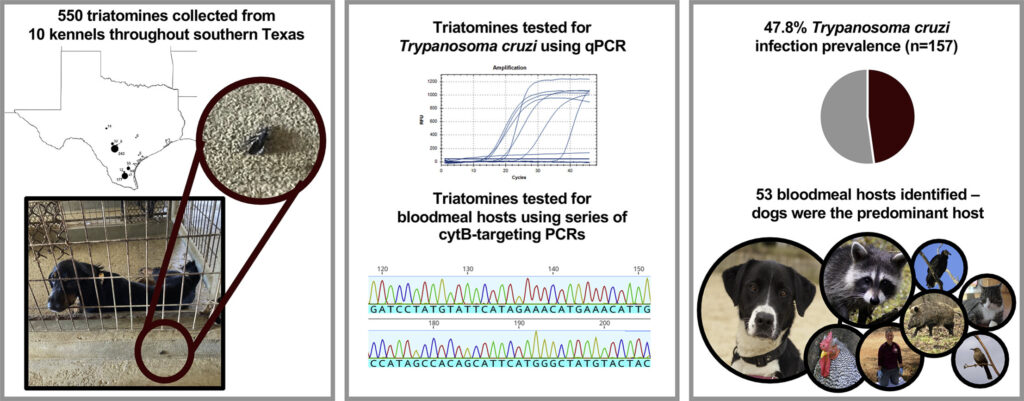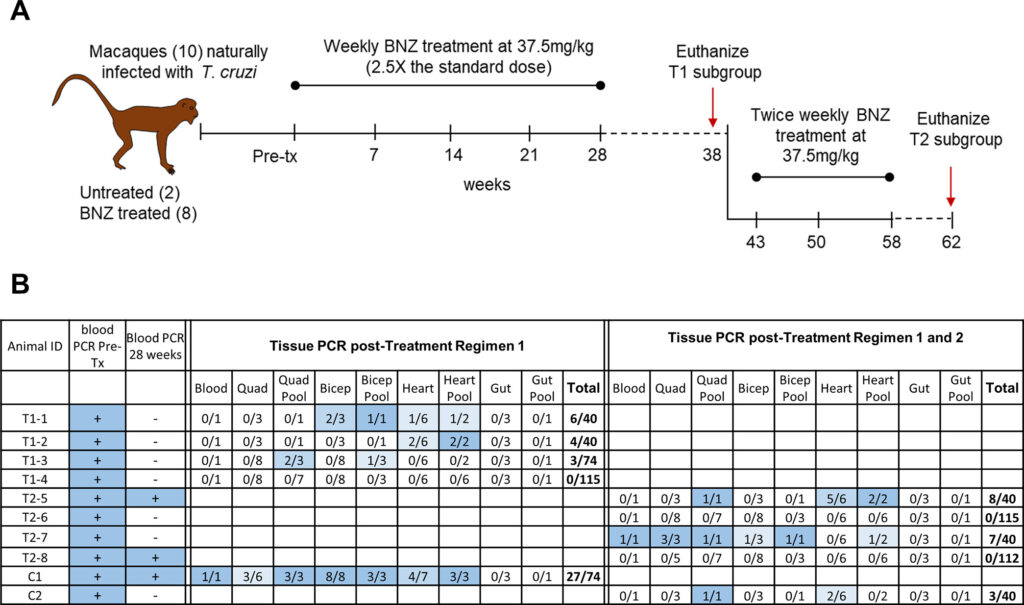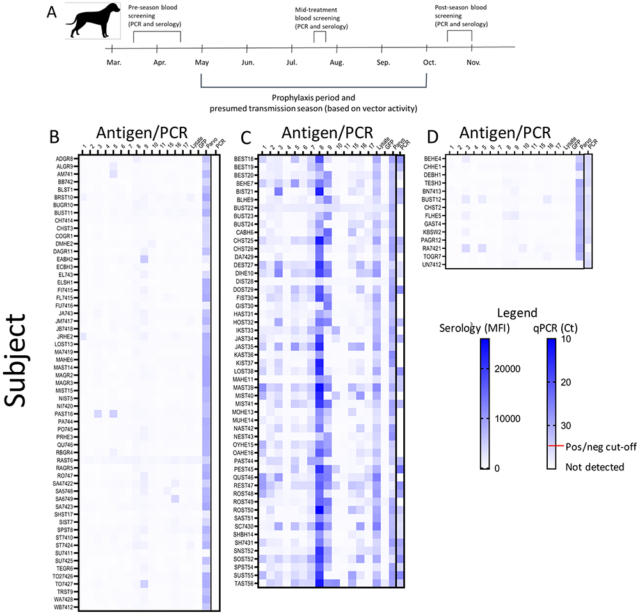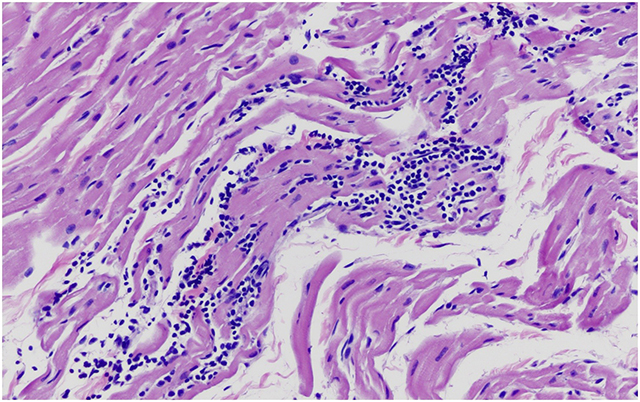Title: Electrocardiographic abnormalities are associated with seropositive Trypanosoma cruzi infection status using a simplified cardiac diagnostic evaluation in dogs
Authors: Kendra A. Zelachowski, Stephanie Collins, Marty Henderson, Lisa D. Auckland, Sukjung Lim, Nicholas D. Jeffery, Sarah A. Hamer, and Ashley B. Saunders
Journal/Date of Publication: Journal of the American Veterinary Medical Association, 2024
Objective: To describe associations between cardiac abnormalities and Trypanosoma cruzi serostatus by use of a simplified diagnostic evaluation in dogs at risk for T. cruzi infection.
Type of Study: Prospective, cross-sectional study
Conclusions:
- Seropositive dogs were more likely to show electrocardiographic conduction system abnormalities (examples: prolonged intervals, AV block, ventricular arrhythmias) than seronegative or discordant dogs.
- Echocardiographic findings did not clearly distinguish T. cruzi infection status in this group of dogs. Many dogs had age related myxomatous mitral valve disease.
- ECG abnormalities (examples: splintered QRS complexes, prolonged PR intervals) were key indicators of potential T. cruzi infection.
- Elevated cardiac troponin I was observed in some infected dogs, indicating myocardial damage.
Clinical Application:
- Electrocardiography can be used to screen for early signs of T. cruzi-related cardiac disease in high-risk dogs.
- Monitoring for conduction system abnormalities (prolonged intervals, AV blocks, splintered QRS complexes) can aid in identifying infected dogs.
- Cardiac troponin I concentrations may serve as a useful marker for myocardial damage, especially in acute or active infections.
- Echocardiography is useful but may not always distinguish T. cruzi-related abnormalities, especially when myxomatous mitral valve disease is present.
- Regular monitoring of seropositive or discordant dogs with ECG and cardiac assessments is recommended to detect and manage progression of Chagas disease.

Lead II ECG recordings obtained in 2 dogs that were seropositive for T cruzi with splintered (asterisk) QRS complexes (panel A) and prolonged P and PR durations (panel B). Paper speed = 50 mm/s; 0.5 cm = 1 mV.

